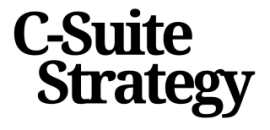
The Importance of Secure Access
Ensuring Robust Protection Measures
The digital transformation of modern business landscapes is an undeniable reality, and with it comes the need for enhanced security protocols. One of the primary concerns for executives is ensuring secure access to sensitive company data while maintaining ease of use. The CEO login process plays a crucial role in this regard. Protecting executive access begins with establishing access that is both secure and user-friendly.
Employers must adopt a vigilant approach, incorporating elements such as unique codes, certificates, and multi-factor authentication to protect against unauthorized access. This is especially critical as email, main content, and business records are increasingly vulnerable to cyber threats. The proper enforcement of these access protocols helps in safeguarding executive data from breaches, thereby enhancing employment security.
Key considerations include employing robust password policies and ensuring that forgotten passwords are easily recoverable, yet secure. Integration with code officials and enforcement bodies, like those in North Carolina, highlights the importance of adherence to regional regulations and helps streamline the qualification process. Similarly, officials qualification and education training are essential for adapting to evolving cyber landscapes. Strategic contact with IT and cybersecurity teams is vital for the ongoing management of access protocols.
Balancing these security needs with user accessibility is a multifaceted endeavor. It involves continuous coordination with IT professionals and adherence to a dynamic privacy policy that evolves alongside technological advancements. The blending of these elements ensures a secure yet seamless application experience for those in critical decision-making positions like the CEO.
To gain further insights into how leadership strategies can be intertwined with effective security measures, explore our navigating leadership insights article. This resource delves deeper into the strategies employed by top executives to fortify their digital fortress while maintaining operational efficiency.
Streamlining Decision-Making Processes
Optimizing Executive Decision-Making Efficiency
The fast-paced environment of business demands swift yet informed decision making, particularly at the CEO level. A streamlined access system aids in this by providing seamless entry to critical data and systems, thereby enhancing the executive's ability to navigate complex business landscapes. Secure and efficient login mechanisms are crucial for facilitating this process.
In today's digital age, the implementation of secure CEO login systems goes beyond merely entering a username and password. It encompasses a thorough identification process, often involving multi-factor authentication, certificates, and even biometric verifications as required within certain industries. The evolution of these systems is bolstered by advancements in technology to ensure login experiences remain both user-friendly and secure for executives, minimizing disruptions in decision-making channels.
- Access to Comprehensive Data: By maintaining an efficient system, CEOs gain expedited contact with essential datasets and analytics, crucial for making timely business decisions. This also includes direct access to employment records, board minutes, and financial applications, which are key factors in governance and strategy planning.
- Communication Streamlining: Secure platforms support direct communication via email and other online methods, reducing the time lost in managing contacts and message exchanges. Efficiency in this area supports faster responses to board and office-related inquiries, including those pertaining to code enforcement or veteran affairs.
- Integration with IT and Cybersecurity: Collaboration with IT teams and cybersecurity specialists ensures the application of cutting-edge tools designed to increase security while preserving usability. Incorporating code standards, privacy policies, and regular cybersecurity drills contributes to safeguarding executive access against potential breaches.
These systems not only safeguard the CEO's digital engagements but enhance their ability to lead decisively and proactively in the face of unpredictable challenges, fostering improved organizational resilience.
Balancing Security with Usability
Reconciling Safety with User Experience
In the intricate dance of executive access, striking the perfect equilibrium between security and usability is a pressing challenge. The CEO must be vigilant, prioritizing secure login protocols that do not compromise the executive experience yet adhere to rigorous business demands. Employing robust password policies combined with multifactor authentication not only fortifies security but also meets the growing expectations of seamless digital access.
This balance becomes even more crucial when considering diverse access points. From the office to remote working environments, execs require swift access to primary systems. Leveraging advanced technologies, such as data encryption and biometric authentication, can enable a safer and smoother interaction application process, reducing the risk of data breaches without sacrificing ease of use.
Further complicating the scenario, the very real threat landscape compels boards and IT teams to rigorously address potential vulnerabilities. They must continually refine user protocols to ensure that executive access meets not only the employment requisites but also satisfies enterprise-grade security expectations without hindering executive efficiency.
Security and usability need not be at odds. By collaborating closely with IT and cybersecurity teams, CEO can implement a layered security framework. This approach maintains the safeguard of sensitive data, while also paying heed to usability, as increasing familiarity with username password systems grows among execs. Handling contact records, verifications, and authentifications are pivotal to a smooth experience.
The strategic leadership avenue inevitably calls for systems that cater to a secure yet accessible executive suite, ensuring seamless transitions between varying digital touchpoints. This understanding not only enhances the usability scores but also boosts the confidence of officials who operate under the relentless pace of executive duties.
Integrating Advanced Technologies
Leveraging Cutting-Edge Technologies for a Seamless Executive Experience
In today’s rapidly evolving business environment, integrating advanced technologies into executive access systems is crucial. The application of these technologies not only enhances the accessibility and usability for CEOs but also aligns with the strategic goals of a business, making it indispensable for sustainable growth.
The use of sophisticated systems such as biometrics for login, two-factor authentication, and AI-powered data analysis tools can significantly bolster security while ensuring ease of access to sensitive information. These tools require executives to authenticate using personalized credentials like a username and password or even a digital certificate, ensuring that only authorized personnel can access critical data.
Moreover, the implementation of cutting-edge security protocols, akin to those used in North Carolina’s code enforcement and by code officials, demands the collaboration between CEOs, the IT department, and cybersecurity teams. Such integration allows for privacy policies and data protection measures that are robust against contemporary threats.
Incorporating advanced technologies shouldn’t compromise usability; rather, it should enhance the user experience by simplifying processes that were once manual and time-consuming. By focusing on user-friendly interfaces and efficient email and record contact systems, executives can bypass unnecessary complications, delivering important decisions swiftly and effectively.
These integrated systems must also accommodate various employment types and adapt to the evolving landscape of business operations, such as the certifying of veterans’ spouses and facilitation for remote work setups. Ensuring that employment information is seamlessly accessible through a ceo directory or online ceo platform is essential.
As businesses continue to evolve, the strategic role of technology in executive access will only become more pronounced. Investing in these capabilities not only ensures a more resilient business model but also guarantees that CEOs can lead with confidence, knowing their tools and processes are both secure and efficient.
The Role of IT and Cybersecurity Teams
Vital Collaboration Between IT and Cybersecurity Teams
As the CEO’s gateway to the company’s core digital assets, secure access management is not just a technical requirement, but a strategic necessity. The collaboration between IT and cybersecurity teams is crucial to maintain a secure and seamless CEO login experience. Education and training efforts need to ensure that code officials and main content enforcement teams work hand in hand with the rest of the office to create a safe digital environment.
IT departments are responsible for maintaining the technical backbone that supports username and password protocols. Meanwhile, cybersecurity teams focus on enforcing secure access through code enforcement and other mechanisms. Together, these teams handle requests like forgotten passwords and implementing privacy policies. They ensure that sensitive information such as contact numbers and email addresses are secure.
This collaboration extends to adapting to regional regulations. For instance, code enforcement in North Carolina might differ from other regions, requiring coordination with officials qualification boards to align on strategies. A CEO's employment and business leadership often interact with local regulations, making it essential for their digital access to be compliant yet efficient.
Ultimately, this partnership between IT and cybersecurity is not only about enforcing security measures but also about creating an easy-to-use yet robust system for executives. As technology evolves, the dynamics between these teams and their contact with the board will grow even more significant.














